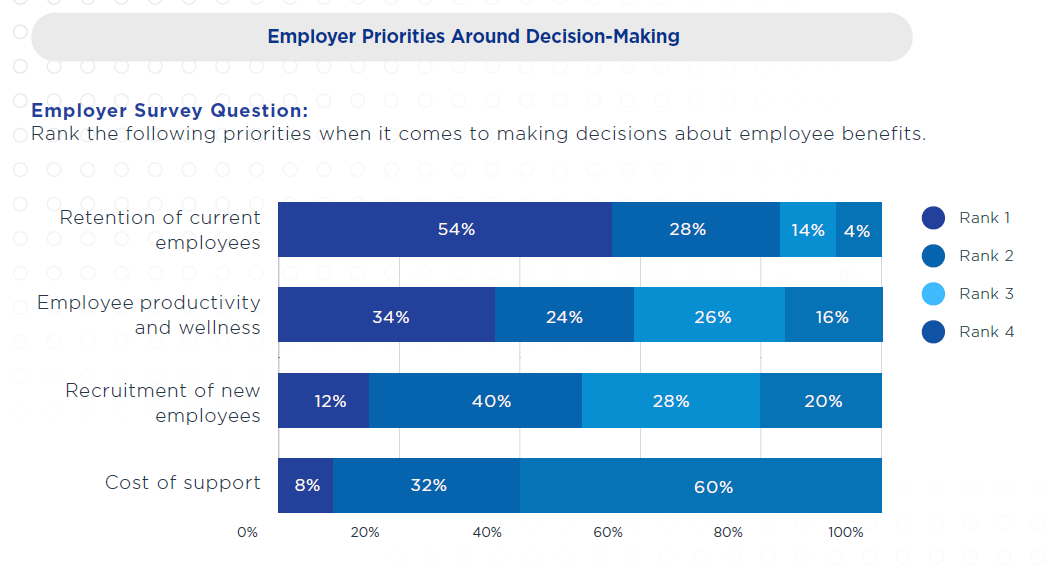Amazon, being among the largest employers globally, offers its employees a competitive employee benefits package featuring Paid Time Off (PTO) and vacation policy. Amazon employs over 1.5 million workers worldwide, with PTO and vacation policies being the main reason behind the attraction of talent in its international centers. A significant number of employees consider PTO one of the most valuable benefits offered by employers. According to a Pew Research survey, 46% of U.S. workers do not take all their available PTO, often due to feelings of guilt or concerns about falling behind at work.
Amazon provides PTO according to the employment classification as a full-time, part-time, or seasonal employee and according to experience as a new employee, veteran, or long-service employee. For instance, the full-time worker earns ten days of PTO in the first year of employment, fifteen days in the third year, and twenty days in the sixth year of service. Part-time employees earn PTO based on their working hours; therefore, they receive fewer days off since they work fewer hours than full-time employees.
According to statistics released by the Bureau of Labor Statistics, in the private sector, 10 days of paid vacation is the standard when it comes to companies with one year of experience. In contrast, Amazon is slightly above this pay scale relative to the PTO of entry-level employees. This focus on PTO and vacation time merely speaks to the company’s overall drive to promote work-life balance, particularly among some of its most critical roles, like its warehouse and logistics jobs.
What is PTO?
PTO refers to the practice where the employee is permitted to be away from work while still being paid for the days off. In this case, the time may be needed for a holiday, a personal issue, or even sickness. PTO, as it is termed, can vary from one company to another, but it usually offers a set of paid holidays that an employee is allowed to take as deemed appropriate.
Key Features of PTO
- Compensation: These are paid times off, meaning that employees can take their time off without fear of losing their wages while on vacation.
- Types of Leave: Depending on the company’s culture and policy, PTO may include vacation, sick, and personal days together as one. This makes the process easy for the employees and the employers.
- Accrual and Allotment: It is also important to understand that companies may have various ways of managing PTO.
- Accrual: PTO depends on the hours of service provided by the employees
- Allotment: Workers are privy to a certain amount of such days at the start of the year; it can be carried forward or may not if the company’s policy doesn’t allow for that.
- Unlimited PTO: Some companies provide their workers with open-ended PTO, which means that there is no fixed number of days that an employee can take off work, but they must get the manager’s permission first.
Interesting Facts About PTO
- Guilt and Stigma: Many employees experience guilt when requesting time off, with 45% agreeing they feel this way. Women, in particular, report higher levels of uncertainty and stress about taking leave compared to men.
- Working During Time Off: A Harris Poll revealed that 60% of employees find it difficult to disconnect from work during their vacations. Additionally, 68% admit to working while on vacation, indicating a cultural issue where taking time off is not fully supported.
- Income and Education Impact: Upper-income workers (51%) are more likely than lower-income workers (41%) to take less time off than offered. Similarly, salaried workers (52%) report taking less PTO compared to hourly workers (39%) due to various pressures related to their roles.
- Generational Differences: Younger workers, particularly Gen Z and younger Millennials, express greater fear of workplace repercussions for taking leave compared to older generations. About 50% of younger workers worry about negative impacts on their careers if they take time off.
- Unlimited PTO: A new trend has emerged regarding unlimited PTO policies, where job advertisements containing this policy have increased by 40% in 2019-2023. However, research has indicated that people who work under the unlimited PTO policy take fewer days off than people with the accrued type of plan.
- Consolidated Leave Plans: There is a growing popularity of amalgamated leave policies that are characterized by sick time, paid vacation time, and other PTOs from the same sources. This approach simplifies administration and encourages employees to take necessary time off without stigma.
Amazon’s PTO Policy Overview
Currently, Amazon offers a paid time off system for employees in the organization that deals with vacation and personal leave. However, several differences exist concerning the employment status and working experience of the employees. Here’s an overview of the key components of Amazon’s PTO policy:
Vacation Days
- Full-Time Employees: New full-time salaried employees are initially entitled to 10 vacation days in their trial year. This increases to 15 days for every year of service beyond the first five and is given as 20 vacation days for those working for six years and above.
- Part-Time Employees: An employee may be allowed to earn between 5-10 vacation days in case the employee has been working on a part-time basis, depending on working hours.
- Reduced-Time Employees: Part-time employees in the role of lower working hours could earn ranging from 7. 5 and 15 Paid vacations annually.
Personal Time
In addition to vacation days, Amazon offers personal time. Personal time is earned from the last day of the first pay period and then continued in the successive pay periods by the employees.
- Salaried Employees: They are allowed to earn 3-6 Personal days each year depending on one’s employment status.
- The total PTO for any new full-time employee is done at 6 days of personal time off in the first year only.
Paid Holidays
Employees also receive seven paid holidays, which include:
- New Year’s Day
- Memorial Day
- Martin Luther King Jr. Day
- Independence Day
- Labor Day
- Thanksgiving Day
- Christmas Day
There are also additional paid holidays in California that can be availed by the employees depending on the employment classification to which the employee belongs; these paid holidays include the day after Thanksgiving and an extra Christmas Holiday.
When one has to work on a known holiday, they are allowed holiday pay, which usually is the hourly wage plus time and a half of the hours worked. For instance, if an employee is to work on Holidays, then they will be paid their usual wages for hours worked plus an additional fifty percent of the hourly wage as Holiday wages.
Sick Leave
Amazon allows employees to use any accrued PTO for sick leave. This means that both vacation days and personal time can be utilized when an employee is ill. The policy is designed to meet or exceed local sick leave laws, ensuring compliance with various regulations across different jurisdictions. Employees can resume work early with no doctor’s certification during the first seven consecutive calendar days of their sickness.
Leaves of Absence
Employees may also take leaves of absence for various reasons, such as medical conditions, family care, or bereavement. Most leaves are unpaid unless specified otherwise (e.g., pregnancy or parental leaves).
Accrual System
Amazon also has an accrual method of PTO whereby the employees are given PTO dependent on the number of hours they work. This system allows the employees to build up their holidays as they wish over the time of the year.
Full-Time Employees
- First Year: 10 vacation days (80 hours) + 6 personal days = 16 total days.
- After One Year: 15 vacation days (120 hours) + 6 personal days = 21 total days.
- After Six Years: 20 vacation days (160 hours) + 6 personal days = 26 total days.
Part-Time and Reduced-Time Employees
- Part-Time Employees: Earn between 5 to 10 vacation days annually, depending on hours worked.
- Reduced-Time Employees: Accrue between 7.5 to 15 vacation days per year.
California-Specific Policy
Employees in California have a slightly different accrual structure:
- First Year: 15 vacation days (120 hours) + floating holidays.
- After One Year: 20 vacation days (160 hours) + floating holidays.
- After Six Years: 25 vacation days (200 hours) + floating holidays.
In California, employees do not receive personal days but are granted three floating holidays each year, which can be used at their discretion.
Unused PTO and Vacation Time
At Amazon, the handling of unused Paid Time Off and vacation time varies based on company policy and state laws. Here’s a concise overview:
Vacation Time
Payout upon Termination: Employees are entitled to receive payment for any unused vacation days upon resignation or termination of employment. This payout is typically included in the final paycheck. Amazon’s policy ensures that all accrued vacation hours are compensated, regardless of state law requirements.
Personal Time Off
Payout Policy: Unlike vacation time, unused personal time off generally does not get paid out when an employee leaves the company.
Comparison with Other Tech and Retail Giants
When comparing Amazon’s Paid Time Off policy with those of other tech and retail giants, several key differences and similarities emerge.
Apple
PTO Days: New employees get 12 PTO days, increasing to 15 per year after the first 3 years of working. Other benefits include the fact that employees can also use extra paid holidays, especially during the festive periods.
Microsoft
Unlimited PTO: Microsoft has an open-bonus accrual policy where the employee can take off as much time as they desire but it only applies to the salaried employees, not the hourly employees. They also offer 10 paid U.S. holidays and fairly flexible policies regarding the parents’ time off.
The allowance of PTO days in Google is an average of 15-20 days, varying with the employees’ years of service and paid holiday, along with flexibility in working schedules. Their policies are usually well above standard and can be classed as being among the best in the whole world.
Meta (Facebook)
Meta has one of the best perks and policies offered within the tech industry, a wide range of paid leave options, and an impressive PTO allowance that does not make employees feel guilty about taking it.
Salesforce: Implemented an open-door policy in the workplace and advised employees to take any sick leave they required without having to worry about the number of days they could take off the company’s policy.
How to Leverage Your Amazon PTO & vacation Policies
For employees working under Amazon’s paid time off (PTO) and vacation policies, there are several tactics that they should take to get the most out of their rights and options. Here are some practical tips:
Understand Your PTO Accrual
- Know Your Accrual Rate: To make your calculations right, it’s important that you understand how PTO is earned in relation to your employment status and duration.
Plan Ahead
- Schedule Time Off Early: It also means accumulating PTO but having limited chances to use it; therefore, use your vacations and personal days wisely in advance. Note that Amazon has a policy of not giving employed workers the opportunity to use PTO until the next year; hence, you should exhaust your days.
Use Your Time Effectively
- Combine Personal and Vacation Days: Since personal time can be used for various purposes, consider combining personal days with vacation days for extended time off. This can be particularly useful for longer trips or family visits.
- Utilize Floating Holidays: If you’re in California or another location with floating holidays, make sure to use these days strategically for personal celebrations or important events that matter to you.
Understand Payout Policies
- Know What Happens Upon Termination: Be aware that while vacation days are typically paid out upon leaving the company, personal time may not be compensated unless required by state law. Understanding this can help you strategize how to use your PTO before resigning.
- Use Personal Time First if Quitting: If you’re considering leaving Amazon, it’s advisable to use personal time first since it generally does not get paid out upon termination, whereas vacation days do.
Frequently Asked Questions
Does Amazon have paid time off?
Yes, Amazon offers Paid Time Off to its employees, with accrual rates based on tenure and employment type (full-time, part-time, or seasonal).
How many PTO hours does Amazon offer?
PTO hours vary based on tenure. Full-time employees can accrue up to 10 days (80 hours) in their first year, increasing to 15 days (120 hours) after three years and 20 days (160 hours) after six years.
Do you lose PTO at the end of the year at Amazon?
Amazon allows employees to carry over unused PTO into the following year, but this may be subject to certain limits depending on location and employment type.
Is Amazon’s PTO unlimited?
No, Amazon does not offer unlimited PTO. Employees accrue PTO based on their work schedule and length of service.
Conclusion
Analyzing Amazon’s complete PTO and vacation plans, one can further note that the company encourages its employees to have adequate time-off benefits comparable with the best practices in the industry. Flexible schedules and PTO that increase with seniority, as well as comprehensive vacations, give Amazon workers adequate paid time off for individual needs, rest, or recuperation, whether the employee is full-time, part-time, or seasonal.
Compared with industry figures, Amazon provides its employees with reasonable policies for work-life balance; moreover, PTO and vacation accrual rates are even higher than those of many private companies. This commitment plays a key role in sustaining high morale among the company’s employees as well as in maintaining their long-term commitment in both corporate and fulfillment center positions within the organization. By having insight into and proper management of Amazon’s PTO and vacation policies, people can find proper ways to have a balanced work-life balance, enhancing their well-being and productivity.




